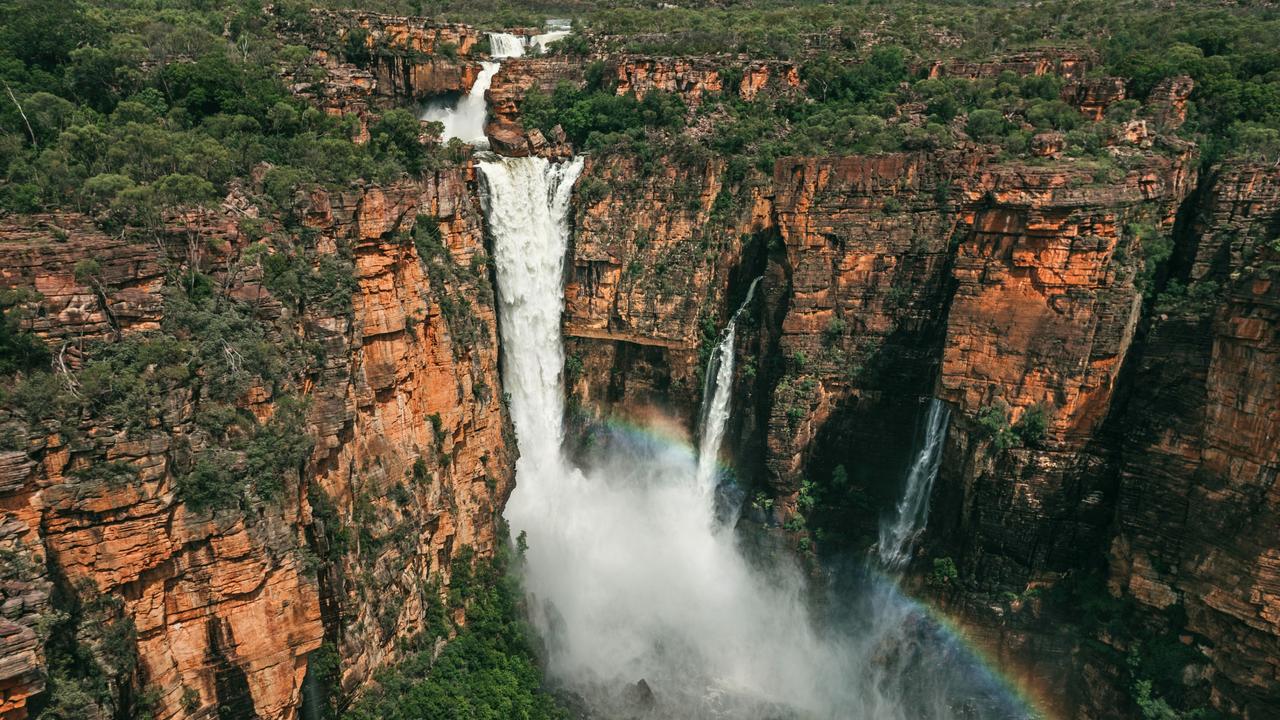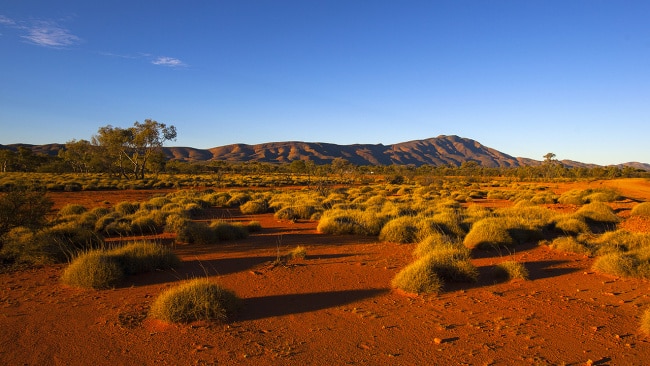Cheat Sheet: Darwin's top laksas plus more things to see on a trip up north
Unless you have been living under a rock, Darwin is not the dusty, outback town you once imagined.
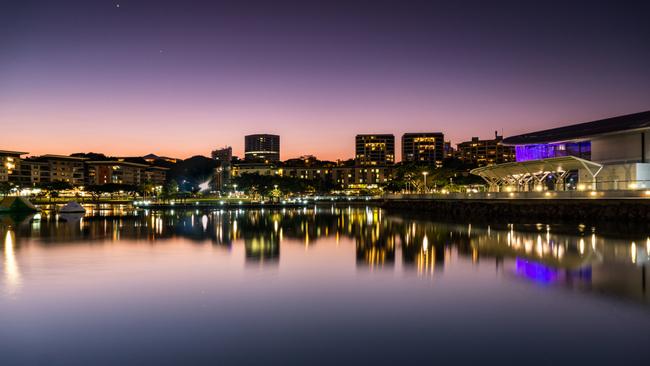
NT
Don't miss out on the headlines from NT. Followed categories will be added to My News.
This tropical beauty has so much to offer. Delve into its colourful history, take a culinary journey or immerse yourself in nature. Whichever you choose, Darwin delivers on all fronts.
WHY SHOULD I GO?
There are a lot of good reasons to visit the city made famous for its crocs, barras and cyclones, but the real reason to make the trip north is for the vibe. Australia’s most Northern capital city is as laid back, unhurried and friendly, as it is hot. In Darwin, strangers treat you like friends, and friends treat you like family.
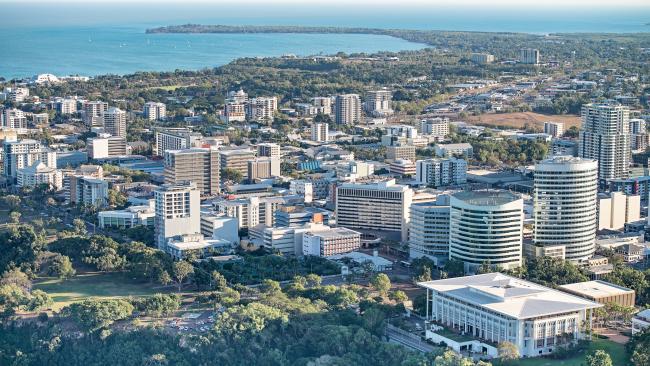
WHEN SHOULD I GO?
There are two main seasons in Darwin. The dry season goes from approximately May to August and is the peak tourist season. Weather is warm and dry, with mild nights. September to December is known as the build up, as the weather is literally building up in heat. Characterised by hot, humid days with limited rain (relief) this is the low tourist season. The wet season breaks around December and goes to April. You can expect hot and humid conditions with occasional monsoonal storms and a chance of a cyclone.
DRESS CODE
Territory Rig is Darwin’s term for smart casual but cliches aside, a singlet, shorts and thongs will suit most occasions. Rubber thongs are particularly helpful if you get caught in a downpour and pack a light cardigan or jumper as some eateries and hotels pump the air con.
MONEY
Some regard Darwin as Australia’s Little Asia what with its tropical setting and famous laksa scene. And while it’s not dirt cheap like its South-East Asian counterparts, you won’t break the bank paying about $8 for a laksa and $12 for a Pad Thai.
GETTING AROUND
Taxis are a reliable form of transport, costing about $30 from the airport to the CBD. Alternatively the Air Port Shuttle is a more economical choice at $35 for return transfers. Most of the bigger chain hotels offer free airport transfers.
Public buses are a good way to travel from the city to the outer suburbs. Or for a more touristy option try the Big Bus Tours.
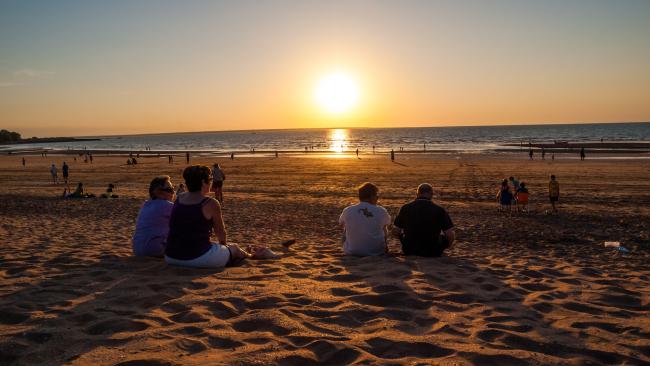
Darwin is located on a peninsula, so walking from the city to the waterfront areas including Cullen Bay, Mindil Beach, the Esplanade and Darwin Waterfront, is quite accessible. Though keep your walking activities to the cooler parts of the day.
Hiring a car is another great option as there are some spectacular drives not far from Darwin including the Mary River Wetlands and Litchfield National Park.
WHAT TO DO
Darwin is steeped in history. From Australia’s first people, to WWII and Cyclone Tracy, there’s something for everyone.
NATURAL HISTORY
It’s no coincidence that Darwin is named after the world’s most famous naturalist, Charles Darwin.
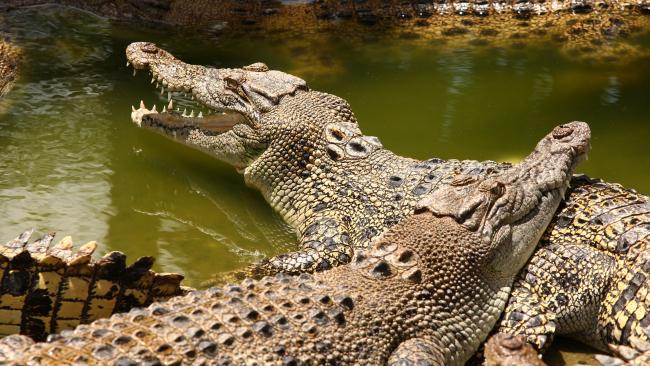
With so much to see, a good place to start is Crocosaurus Cove . Located in the heart of the CBD this will get you up close and personal with some of the Territories most infamous lizards.
The Territory Wildlife Park is a great day trip. Visit early in the day when it’s cooler and the animals are more active. Tie it in with a picnic lunch and swim at Berry Springs.
EXPLORE DARWIN AND LITCHFIELD NATIONAL PARK
UNEXPECTED AND DELICIOUS: DARWIN'S FOODIE SCENE
Crocodylus Park is one of Darwin’s original animal parks and features over a thousand crocodiles. But if you are beginning to tire of the big lizards, don’t fear, they also have a range of animals including tigers, lions, buffaloes, monkeys and meerkats!
Get up and close with a different type of local at the fish feeding at Doctor’s Gully. This natural phenomenon caused by high tides sees mostly mullet, bream and barramundi coming in for a feed but stingrays, cod and even the odd mud crab can sometimes be sighted.
For an experience unparalleled, Sea Darwin offers you the chance to witness turtles nesting and hatching in their natural habitat. Timings are dependent on the lunar calendar.
If you’d prefer to see the animals in the comfort of air con, then head to the Museum and Art Gallery of the NT. MAGNT is a hub of all things Territory, and is also home to the Top End’s most infamous croc, Sweetheart (this guy is stuffed just to be clear). While the Cyclone Tracy exhibition shares a telling story of disaster and shock.
MILITARY HISTORY
With the fall of Singapore during WWII to Japanese forces, Darwin became the Allies Northern hub. Not long after, she too would come under attack in what was just the beginning of over 200 raids.
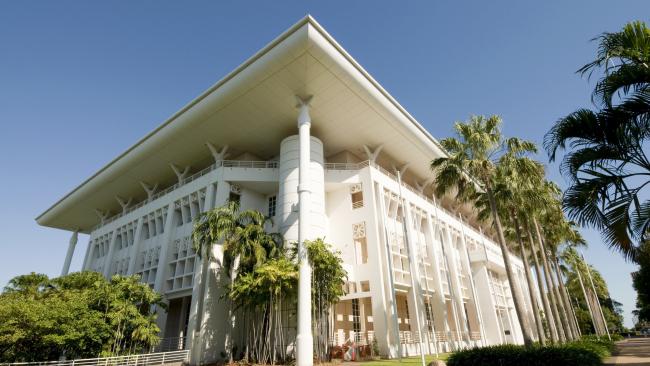
There is an excellent range of museums to dig further into this history including Darwin Military Museum, Royal Flying Doctor Darwin Tourist Facility which includes a state of the art virtual reality exhibition and Darwin Aviation Museum but there are also a number of war relics that can be found within the city limits if you know where to look. On the floor in Parliament House is a plaque in the exact spot where 10 people were killed in the bombing of the Post Office, or walk along the Esplanade and journey back to 1942 with a podtour.
STAYING COOL
Darwin is hot and you’ll need to have swimming on your radar in order to keep sane. The Darwin Waterfront has the Wave Pool and Water Lagoon to choose between as well as plenty of great restaurants and pubs. Nightcliff Swimming Pool is a public pool like no other. Perched atop the cliffs in the tropical suburb of Nightcliff, this is a great spot to do some laps and enjoy a snooze in the shade. Leanyer Recreation Park is a free water park which is great for the little and big kids.
EATS
Darwin has a thriving market scene, with their being at least one on every day from Thursday to Sunday. Follow your nose and if there’s a line for a van, Darwin locals only line up if it’s worth it. The most iconic markets are Mindil Beach Sunset Markets, Parap Village Markets and Nightcliff Markets.
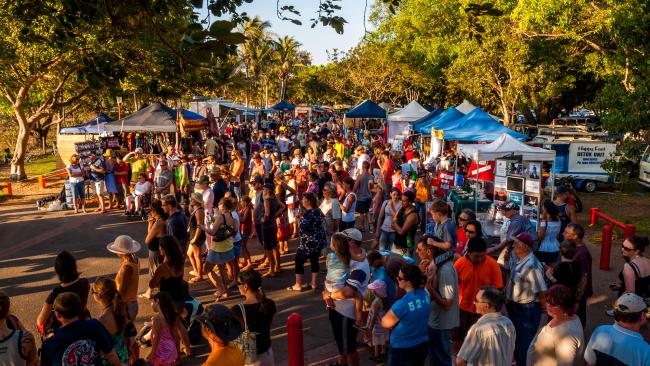
For more travel news and inspiration sign up to Escape’s newsletter.
Originally published as Cheat Sheet: Darwin's top laksas plus more things to see on a trip up north

